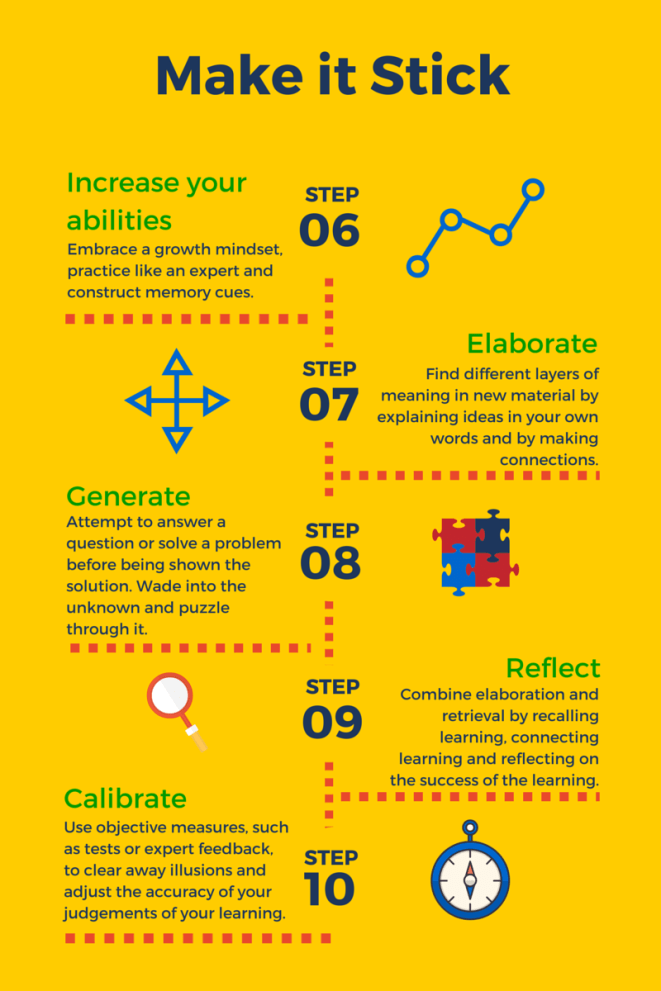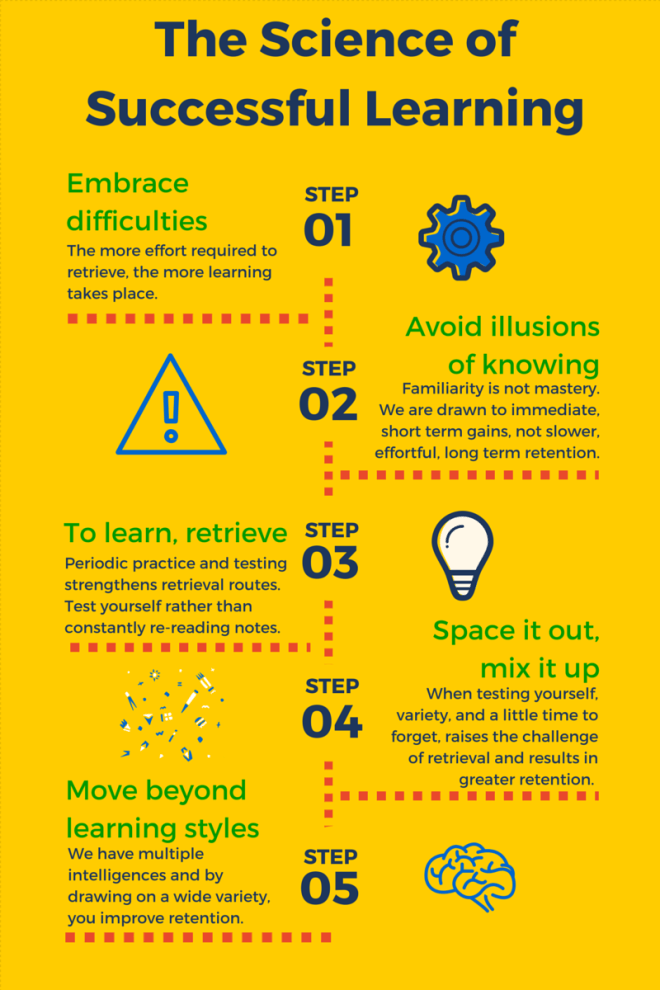I’ve been reading Make It Stick: The Science of Successful Learning by Brown, Roediger III and McDaniel. In previous years, I’d read and forgotten, or, worse, convinced myself I’d become unconsciously skilled, in whatever the particular contents of my summer professional reading. However, I am mindful of the Conscious Competence Ladder and its implications for keeping your understanding of pedagogy, and your awareness of your own mastery of it, as sharp as possible. Failure to do so means you face the ignominy of slipping from being unconsciously skilled (good!) to being unconsciously unskilled (bad!). So, consciously practicing a bit of elaboration as laid out in the book, find below an infographic summary of the book’s central ideas, and two takeaways for my classroom, one new, one an affirmation of an established practice.

NEW: As mentioned here in my previous post, the “Mix It Up” Kahoot idea was inspired by one of the key learnings from the book that spaced, varied retrieval significantly aids retention of learning.
OLD: I’ll make more use of an activity I came across with the PTC called the “Circle of Shared Enlightenment”. You have students form two circles, one inside the other, with the inside circle of students facing the outside. You then ask one circle of students to retrieve information, elaborate on material, reflect on learning, or summarise understandings to their partner in the other circle. Typically, I insist that while one student speaks, the other actively listens. I also provide varied time limits. You can rotate circles to mix up partners. Examples of some instructions:
“Speak for one minute about the most significant theme in Macbeth.”
“Summarise what you’ve just heard in 30 seconds.”
“Elaborate on the last person’s explanation.”
It’s a variation on any kind of think-pair-share routine, but it gets everyone on their feet and feels more dynamic. To pick up any misconceptions you might miss when wandering around the circle, be sure to debrief the students by asking for questions, or posing your own.

